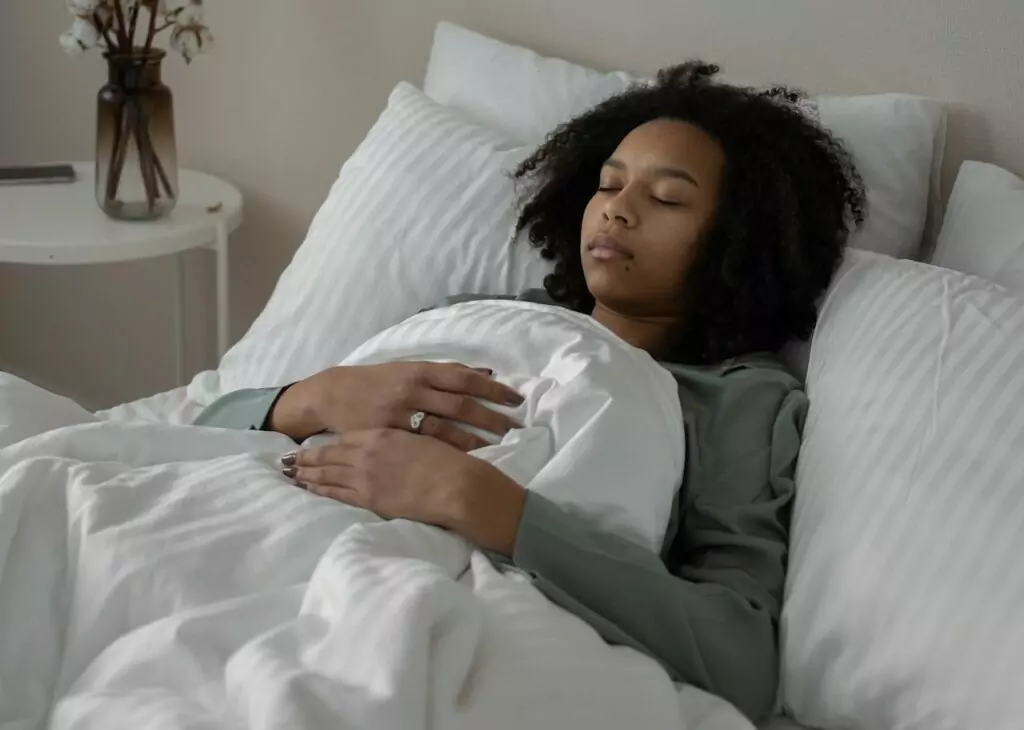BLOG
 January 17, 2021
January 17, 2021Article by Miray Kayacan
Sleep paralysis is the condition of feeling paralyzed while being conscious in the stages of waking up or falling asleep. It is often accompanied by fear inducing hallucinations, suffocation feelings, pressure on the chest, and a heightened sense of terror (Olunu et al, 2018).
In sleep paralysis, the brain informs the body that it is still in the rapid eye movement (REM) stage. In this stage, the body is paralyzed so that one can not act their dreams out. Heart rate, blood pressure, and breathing are increased and this is the stage where dreams occur (Olunu et al, 2018). Your body is asleep but your mind is awake.

Historically sleep paralysis was considered a supernatural experience or a visit from an evil being. Many cultures have different definitions for the evil intruder: a ghost, a jinn, or a witch. Different remedies were offered for sleep paralysis throughout history which are mostly based on religious practices. For example; Chinese people got help from spiritualists, Italians believed a broomstick on the bedroom door would prevent the intrusion whereas Greeks used phlebotomy and special diets (Olunu et al, 2018).
The cause of sleeping paralysis is still a mystery however there are certain risk factors including: PTSD, stress, mental health issues, narcolepsy, sleep deprivation, fatigue, bad sleeping habits, and genetics (Cheyne et al, 1999; Denis, 2018; Lišková et al, 2016).
There is currently no treatment for sleep paralysis but it is recommended that working on risk factors like mental health issues and sleeping habits can help prevent sleep paralysis (Jalal et al, 2020). Some non-pharmacological interventions were proposed including Meditation-Relaxation (MR) therapy and Cognitive behavioral therapy (CBT) (Jalal et al, 2020). The techniques used today are for prevention and management purposes.
While there is no research or historical practices linking connected breathwork and sleep paralysis, connected breathwork is reported to help with stress and PTSD (de Wit & Cruz, 2020) which are some of the risk factors for sleep paralysis. PTSD patients experience sleep paralysis significantly more than people who do not have PTSD (Hinton et al, 2005). This connection supports the idea that breathwork is a prevention method for sleep paralysis. Yoga and yogic breathing techniques (Pranayama) are reported to be used for sleep disorders, including narcolepsy (Stephens, 2019). Since sleep paralysis is a common symptom of narcolepsy, we can infer that pranayama indirectly helps with sleep paralysis.
Overall the literature on sleep paralysis is fairly limited, especially on causes and treatment methods. It is estimated that 8% of the population experience sleep paralysis (Olunu et al, 2018). Since it is a common experience, more research is required. Some sources are suggesting that connected breathwork is a prevention method, but further clinical and practical trials are required.
Want to delve deeper into a breathwork phenomenon? Join our Breathwork Method Teacher Training and learn everything you need to kickstart both personal and professional transformations.
____________________________
References Cheyne, J., A., Rueffer, S., D., and Newby‐Clark, I., R. (1999). Hypnagogic and hypnopompic hallucinations during sleep paralysis: Neurological and cultural construction of the nightmare. Conscious Cogn, 8, 319‐37.Denis, D., French, C. C., and Gregory, A. M. (2018).
A systematic review of variables associated with sleep paralysis. Sleep Medicine Reviews, 38, 141-157.Hinton, D. E., Pich, V., Chhean, D., Pollack, M. H., & McNally, R. J. (2005). Sleep paralysis among Cambodian refugees: association with PTSD diagnosis and severity. Depression and Anxiety, 22(2), 47-51.Jalal, B., Moruzzi, L., Zangrandi, A., Filardi, M., Franceschini, C., Pizza, F., and Plazzi, G. (2020).
Meditation-Relaxation (MR Therapy) for Sleep Paralysis: A Pilot Study in Patients With Narcolepsy. Frontiers in Neurology, 11.Lišková, M., Janecková, D., Krácmarová, L. K., Mladá, K., and Bušková, J. (2016).
The occurrence and predictive factors of sleep paralysis in university students. Neuropsychiatric disease and treatment, 12, 2957.Olunu, E., Kimo, R., Onigbinde, E. O., Akpanobong, M. A. U., Enang, I. E., Osanakpo, M., and Fakoya, A. O. J. (2018).
Sleep paralysis, a medical condition with a diverse cultural interpretation. International Journal of Applied and Basic Medical Research, 8(3), 137.Stephens, M. (2019). Yoga for Better Sleep: Ancient Wisdom Meets Modern Science. North Atlantic Books.Wit, P. A., and Cruz, R. M. (2020).
Treating PTSD with Connected Breathing: A Clinical Case Study and Theoretical Implications. European Journal of Trauma & Dissociation, 100152.